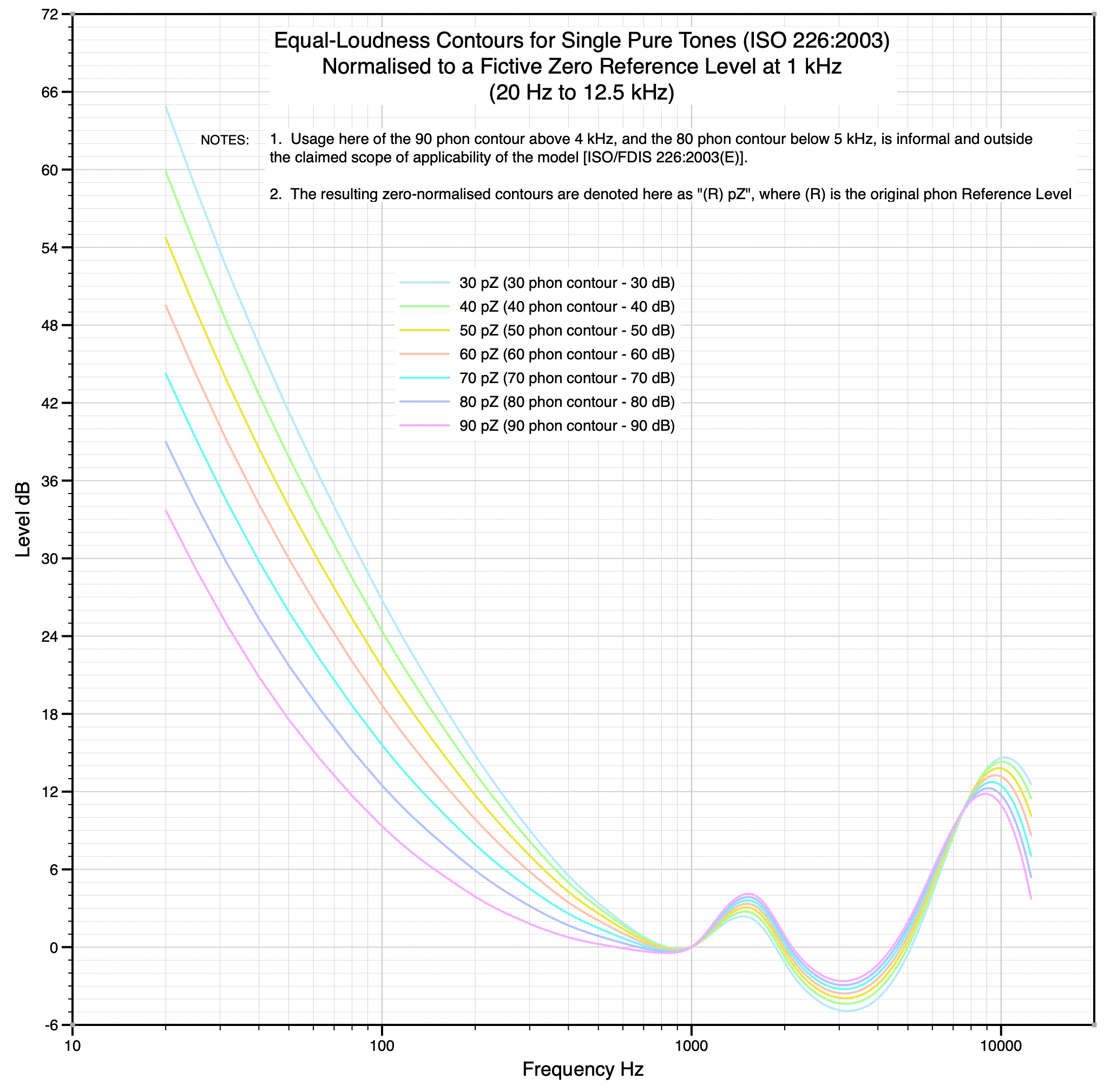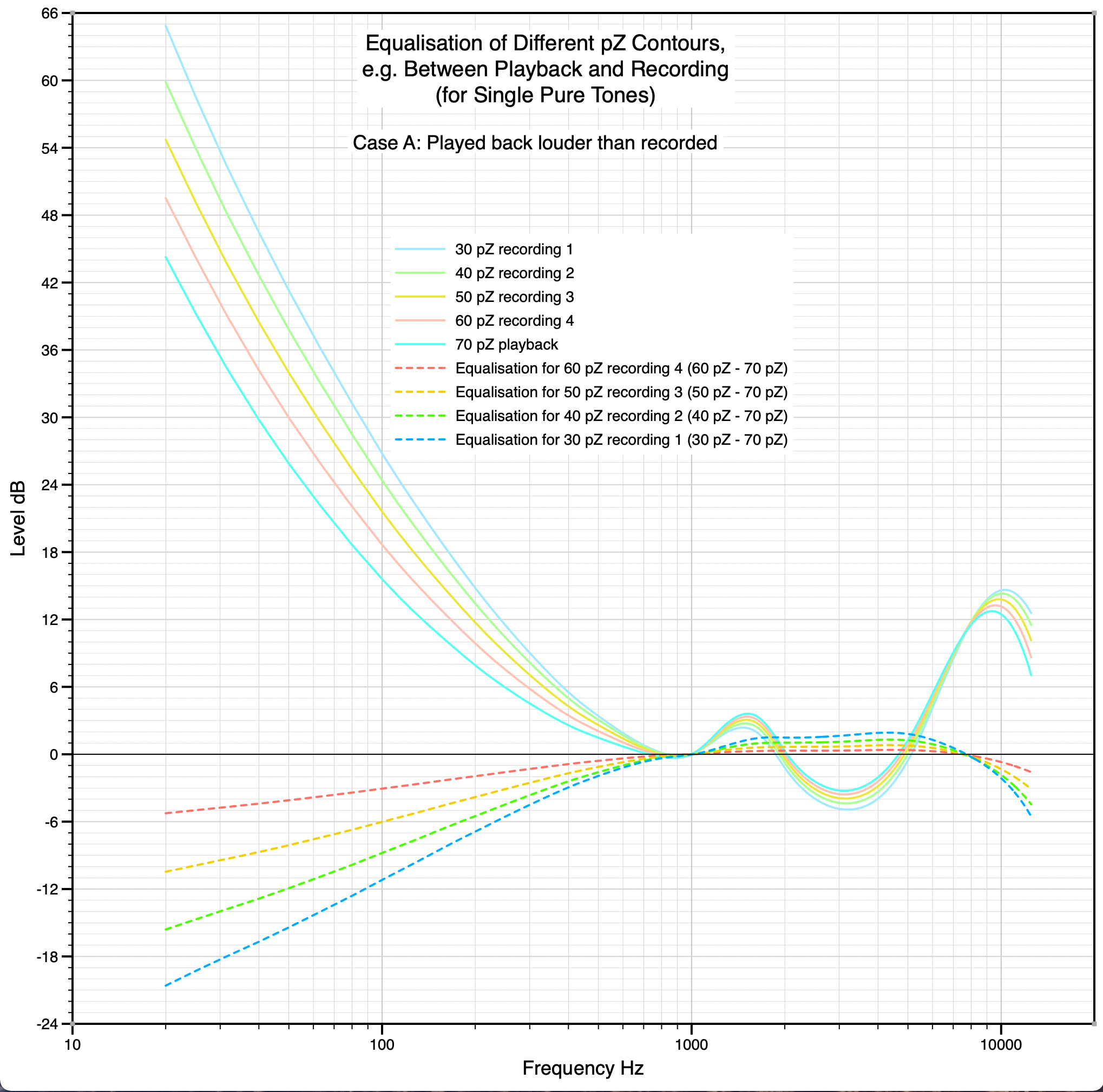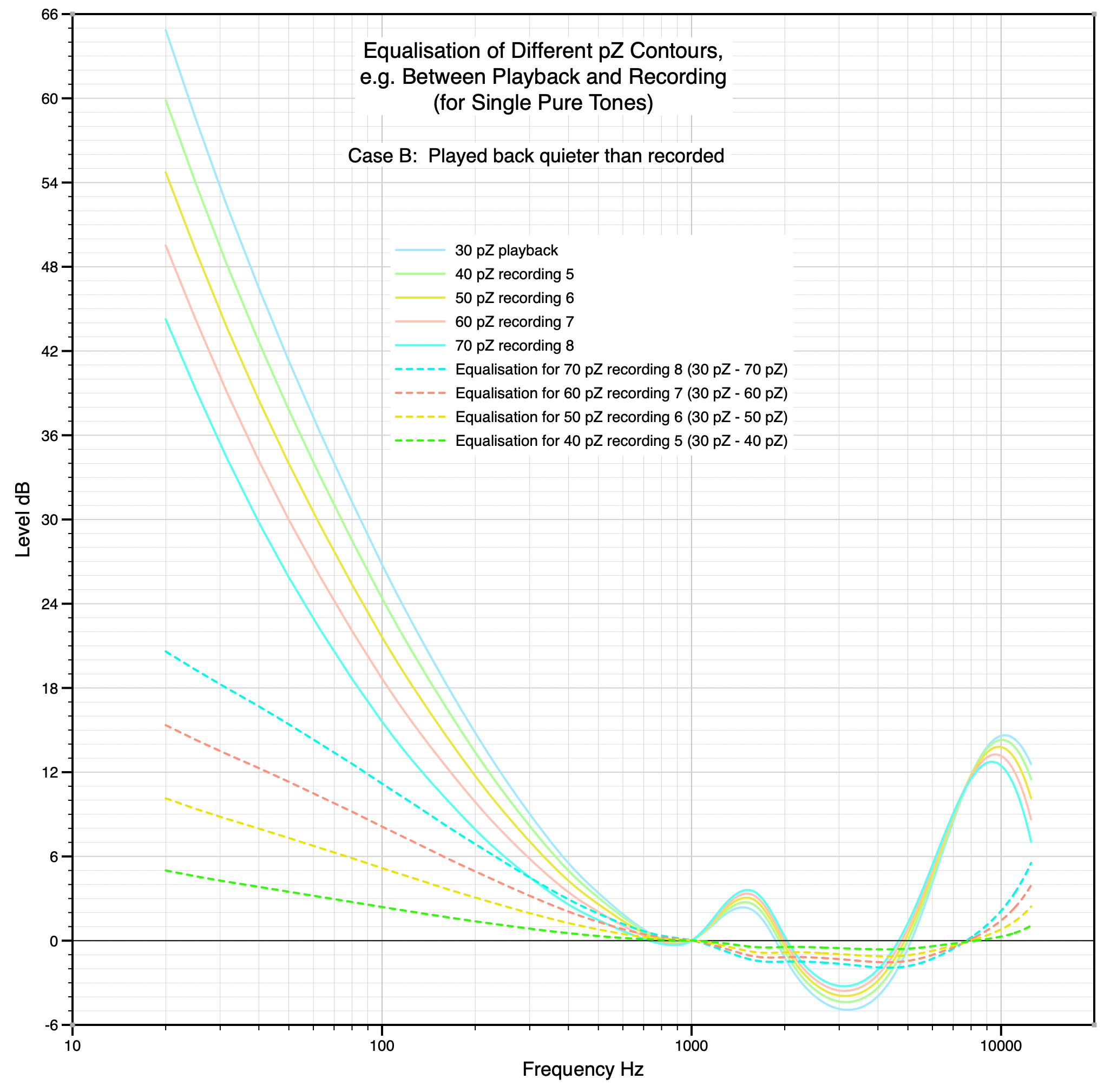[Recovering from Omicron and currently have super brain-fog - gahh! Any errors below are mine.]
Back in 2013 while catching up with the latest thinking on loudness, I found a simple theoretical relationship that has served me very well in mixing for distance before applying any reverb. I intended to sort it out as a slick and comprehensive method, but never got around to it. Still, I reckon I should share it now because even in its crude present form I believe it may be useful to others.
First, some science.
The first big update for me was learning about the most recent "equal loudness contours" standard, published as ISO 226:2003 (see 1st attachment below). Previously I'd long been familiar with the Fletcher-Munson equal loudness curves published in 1933.
I then wanted to know how I could use EQ to transform one loudness contour into another. To do that I first normalised the contours to a common zero reference level, in order to get a good look at the purely spectral differences between them without being distracted by their reference-level-related differences. (See 2nd attachment). Then I subtracted one curve from another and BINGO! Below 1 kHZ, where all the really significant spectral differences are, plots of these differences turn out to be pretty much straight lines! (See "Case A" and "Case B" attachments.)
I was immediately reminded of Peter Baxandall's bass tone control, which has been used in millions of hifi systems since the 1950s.
But there was a snag: these equal-loudness contours were empirically derived in academically-rigorous tests using single pure tones only. I was well aware that I'd be venturing away from science by applying these curves in any other way.
And now, art.
Of course it's frustrating that there's still no definitive science-backed guide to equal loudness for broadband sound (or what audio engineers tend to call "programme material" as distinct from single pure tones). Meanwhile however, recording, mixing and mastering engineers continue to produce beautiful work! They know when, where and how to apply "artistic license". And that's what I endeavour to do now with my dry mixing for relative distances. The all-abiding criterion for me is that it must sound right - no matter what way it's done.
I tried a couple of Baxandall EQ plugins with good results, but I wanted to follow my spectral difference plots more precisely and also merge spectral and volume adjustments into a single control. So I ended up using my own Baxandall-ish setup in MeldaProduction's Dynamic EQ plugin (it has a perfect "low-slope" filter that I've not found anywhere else - not even in FabFilter's Pro Q3). Generally I ignore the spectral differences above 1 kHz, which may or may not be pure laziness. (Well, the only practically significant higher-frequency spectral differences are above 10 kHz, and since the experiment subjects from whom these contours were derived were all between 18 and 25 years old, I can't put myself in their shoes, lol.)
I can't say I've ever nailed the volume part of the combination to my complete satisfaction. But knowing that sound volume drops by 6 dB SPL for any doubling of distance, and using the low-slope filter gain and volume controls separately, I've always been able to get a convincing distance effect. One day perhaps I'll work out the perfect way of combining the two adjustment laws in one control.
I find that mixing dry for relative distances first is best, then reverb or room mics are easy to add and adjust to suit the subjective sense of dry distances. Spectral differences must give the right subjective impressions of relative distances in the first place; subsequent treatment with reverb or room mic mixing won't be able to undo obvious errors in the dry balance of subjective distances.
It can be said that volume adjustments alone should take care of distance for each instrument, because the associated spectral differences are built into our hearing. And by and large I agree with that notion. Perhaps a tiny touch of HF air absorption (single-pole high cut filter) also helps in emulating large differences in distance. And yet something about this loudness-contour-transformation trick is just so compelling to the ear. When combined with relevant differences of pure volume, nothing else seems to have the same powerful ability to place sounds further back or further forward in a mix so convincingly.
Well now that I've shared this, perhaps someone will explain why it works so well. (Oh and let's hope Smiffy also turns up to entertain us again with another of his grandiose exhibitions of dogmatic drivel, lolol).
Finally, let's not forget that Synchron libraries are already pretty nicely sorted in terms of relative distances and associated spectral balances. The palaver I've just described ain't necessary unless you're doing something like radically re-seating the instrumentalists on stage. Happy mixing!



